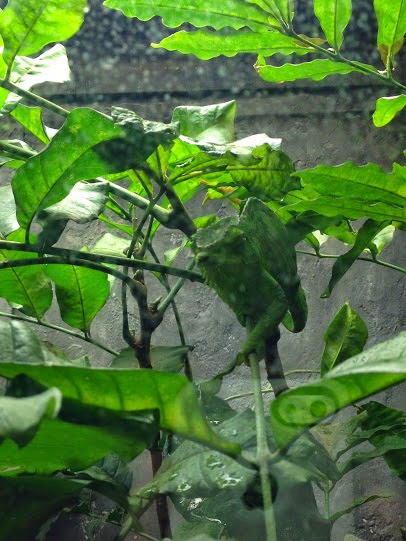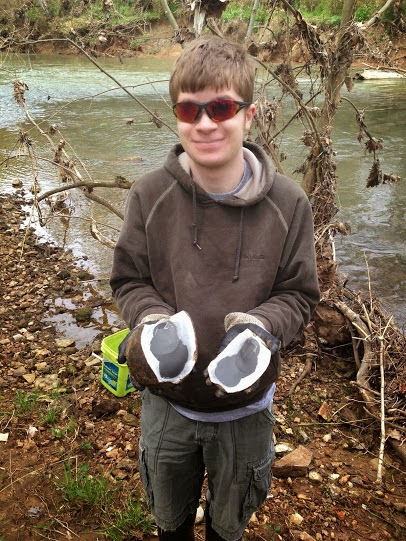The first day we drove to the Creation Museum in Petersburg, KY. It is just over the border from Cincinnati, Ohio. We had a fun time there, I saw some cool stuff.
Mastodon or mammoth bones, I cannot remember which.
I absolutely love chameleons, this one was trying to get on that grating above his head. He eventually gave up on trying that.
His friend was cool too.
This animatronic Utahraptor was disturbingly realistic.
If you want to visit the Creation Museum, visit the this link: Creation Museum . It is an informative, family-friendly, and thought-provoking museum that has well done exhibits.
Ft. Payne chert.
Isn't that stuff just beautiful?
The view from where we parked.
The area where I was finding the best pieces. That clay is as bad as it looks, about five pounds would stick to each shoe when you walked through it.
All that I found in the ten minutes we stayed.
This site wasn't super productive, although I do wish we had found more.
Next, we made our way to the town of Sonora, where more Sonora chert was said to occur. That area was quite flooded and I didn't find any, maybe next time. After that, we headed to Christian Co. where St. Genevieve hornstone was said to outcrop, according to several internet sources. We found a river near where I thought might be flint, but there wasn't a place where I could get down without trespassing. So I decided that I would ask the landowner for permission to collect chert. I knocked on the door and talked to the resident, who turned out to be a really nice guy and an artifact hunter. After chatting a little while, he told me some spots on his property that would be good places to look. Once we got down to the river, we were on a limestone shelf that had nodules of St. Genevieve hornstone eroding of it. The river was beautiful, and the flint was very high grade and in decently large pieces.
The first nodule I found. It made me a happy knapper for sure.
A cannonball-shaped nodule encased in the "parent" rock.
This picture shows what the site was like.
Me, posing with rocks.
A close up of a nodule.
More flint eroding out of the limestone. This piece was crappy so I left it.
After driving for the majority of a day, we made it to the area that where Carter Cave chert outcrops. It took us a while to find a spot where we could park and get down in the stream bed. Soon, I started finding small to medium sized pieces of Carter Cave chert. I was so excited! Carter Cave is a rare and desirable material to knap, so I felt pretty blessed to find it.
A shot of the gravel bar.
Posing with the largest piece I found, which was a great quality too.
Checking rocks with potential.
Here is the total haul. I did well on this trip, especially when one considers that there was flooding going on and I was there only Wednesday-Sunday.
All of the chert that I collected at my previous spot.
The nodules of St. Genevieve chert. Note shoe for size reference.
All of the Sonora hornstone. Note shoe for size reference.
The Carter Cave chert. Note shoe for size reference.
A couple of big chunks.
A Snyders point that I made from St. Genevieve chert.




























